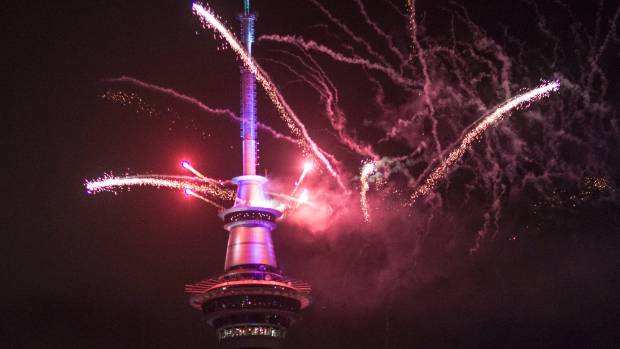The first country to celebrate New Year’s Eve annually is the Oceanic country Kiribati—the island of Kiritimati to be precise.
Kiribati is an island country, made up of more than 30 islands and atolls spread over hundreds of miles, and the International Date Line actually loops eastward around the country’s easternmost islands (including Kiritimati) in order to keep them all in the same day (otherwise the country’s eastern islands would be up to 24 hours behind the western islands). Kiribati is also the only country to have territory in all four hemispheres.
The cities and countries of Chatham Islands, New Zealand; Petropavlovsk-Kamchatsky, Russia; and Sydney, Australia celebrate the new year shortly after Kiribati.
Time Zone Difference Examples
New Year’s Day arrives at a different hour in each of the Earth’s 24 time zones, as illustrated by the comparisons below.
Kiribati New Year’s Traditions
A former British colony and current member of the Commonwealth of Nations, Kiribati is a developing country—one of the least-developed countries in the world, in fact—with a Human Development Index score of .624. The tiny island country’s New Year’s celebrations are notably more modest than the fireworks-centered spectaculars in cities such as New York, Sydney, or London—Kiritimati’s population is fewer than 10,000 people.
However, the Kiribati temperature on New Year’s Eve is much warmer than in some parts of Europe and North America. It’s usually between 25-30 degrees Celsius (77-86 Fahrenheit), which permits snorkeling, swimming or fishing, and golfing on New Year’s Eve. People also gather at the public maneaba (meeting place), which has the same shape as an American park pavilion but with roofs made of coconut wood. Finally, music and dancing have always been a part of Kiribati culture, and are likely to be a part of the country’s NYE observance.
Facts About Kiribati
The name Kiribati is actually pronounced “Kiribass” because ti has an s sound in Gilbertese, the country’s spoken language. Kiribati obtained its independence from the UK (and chose its current name) in 1979, making it one of the world’s youngest sovereign states other than the dozen-plus countries formed from the dissolution of the Soviet Union and Yugoslavia. Kiribati consists of 32 coral atolls, which are land formations composed of reef rings around lagoons, and one raised coral island. While the atolls of Kiribati have an collective area of only 811 km² (313 mi²), they are spread over 3.5 million km² (1.4 million mi²) of ocean area.
Kiritimati is the Gilbertese language translation of the word “Christmas”, and refers to one of the island’s alternate names, Christmas Island, which it acquired when British explorer James Cook arrived there on Christmas Eve in 1777.
Note, however, that Kiritimati is different from the island officially named Christmas Island, which is located in the Indian Ocean and is a territory of Australia, as well as similarly named islands off the coasts of Tasmania and Nova Scotia.
While archeological evidence indicates that the Polynesian people visited and occasionally occupied Kiritimati as early as 1250 AD, the first permanent settlement in the modern era did not begin until 1882. The militaries of both the US and the UK used Kiritimati as a nuclear testing site in the 1950s and 1960s.
A number of Oceanic islands such as American Samoa and Baker Island are actually located to the west of Kiritimati, but still to the east of the International Date Line’s original path.
Because the redrawn International Date Line returns to this original path after wrapping around Kiribati, these islands experience the new year 24-26 hours after Kiritimati.
